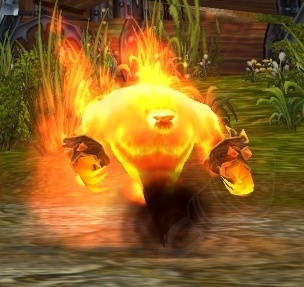
Through its incredible diversity of utility, there are plenty of great conjuration spell options available to both low and high-level characters alike. Home to teleportation spells and summoning spells alike, conjuration spells can do anything from boosting mobility to offering combative assistance and improved action economy through a variety of summoning spells. The Familiar is a summon that you can get through any class that. Updated by Paul DiSalvo on August 22, 2021: The Conjuration school of magic is one of the diverse spell lists in all of D&D. Classes With Familiars 5e The Ultimate D&D 5E Rogue Class Guide (2022) Rogues. So today, we're going to examine the most useful Conjuration spells that players can use in Dungeons & Dragons! A comprehensive list of all official Conjuration spells for Fifth Edition. As there are many Conjuration spells in the game, it's fair to expect that these spells won't all be equally useful. Conjuration Spells for Dungeons and Dragons (D&D) Fifth Edition (5e). Conjuration spells allow players to create and summon a wide variety of objects and creatures to assist in combat, puzzle-solving, and social situations alike. One of the most frequently useful types of magic in D&D is the school of Conjuration. RELATED: Dungeons & Dragons: Best Warlock Invocations, Ranked For example, spells that alter any element of a creature or object would be classified as transmutation spells. Here’s a table comparing the Special forms of familiars: HP. The Pseudodragon’s Keen Senses make it the strongest spy and scout of the bunch, for example. They are the strongest familiars in DnD, with various strengths, weaknesses, and abilities. If the spell requires an attack roll, you use your attack modifier for the roll.Spells in Dungeons & Dragons are broken up between numerous types of magic that are dictated by the nature of a given spell. The four Special forms of familiar are Pseudodragon, Imp, Sprite, and Quasit. If you already have a familiar conjured by the Find Familiar spell or similar means, then one fewer familiars are conjured by this spell. Your familiar must be within 100 feet of you, and it must use its reaction to deliver the spell when you cast it. Conjure fey, which also allows you to get beasts, does not have that wording, so the conjured critter would be a fey and unaffected by. The pertinent wording is 'Each beast is also considered fey.' So things that affect beasts or fey will affect it. Your familiar transforms into the chosen creature.įinally, when you cast a spell with a range of touch, your familiar can deliver the spell as if it had cast the spell. I would say beast sense will work on any beast from conjure animals. Choose one of the forms from the above list. If you cast this spell while you already have a familiar, you instead cause it to adopt a new form. You can't have more than one familiar at a time. During this time, you are deaf and blind with regard to your own senses. Additionally, as an action, you can see through your familiar's eyes and hear what it hears until the start of your next turn, gaining the benefits of any special senses that the familiar has. While your familiar is within 100 feet of you, you can communicate with it telepathically. Whenever the familiar drops to 0 hit points or disappears into the pocket dimension, it leaves behind in its space anything it was wearing or carrying. As an action while it is temporarily dismissed, you can cause it to reappear in any unoccupied space within 30 feet of you. Alternatively, you can dismiss it forever. As an action, you can temporarily dismiss the familiar to a pocket dimension. It reappears after you cast this spell again.

When the familiar drops to 0 hit points, it disappears, leaving behind no physical form. A familiar can't attack, but it can take other actions as normal.


In combat, it rolls its own initiative and acts on its own turn. Summon Aberration - DND 5th Edition Summon Aberration Source: Tasha's Cauldron of Everything 4th-level conjuration Casting Time: 1 action Range: 90 feet Components: V, S, M (a pickled tentacle and an eyeball in a platinum inlaid vial worth at least 400 gp) Duration: Concentration, up to 1 hour You call forth an aberrant spirit. Your familiar acts independently of you, but it always obeys your commands.

Appearing in an unoccupied space within range, the familiar has the statistics of the chosen form, though it is a celestial, fey, or fiend (your choice) instead of a beast. They’re typically angelic entities or heavenly beings. What Are Celestial Creatures in D&D 5e Celestial is one of the monster types in D&D 5e Celestials are one of the 14 monster types in D&D 5e. You gain the service of a familiar, a spirit that takes an animal form you choose: bat, cat, crab, frog (toad), hawk, lizard, octopus, owl, poisonous snake, fish (quipper), rat, raven, sea horse, spider, or weasel. Conjure Celestial 5e List D&D 5e Celestials FAQ Let’s start off with what celestials are in 5e.


 0 kommentar(er)
0 kommentar(er)
